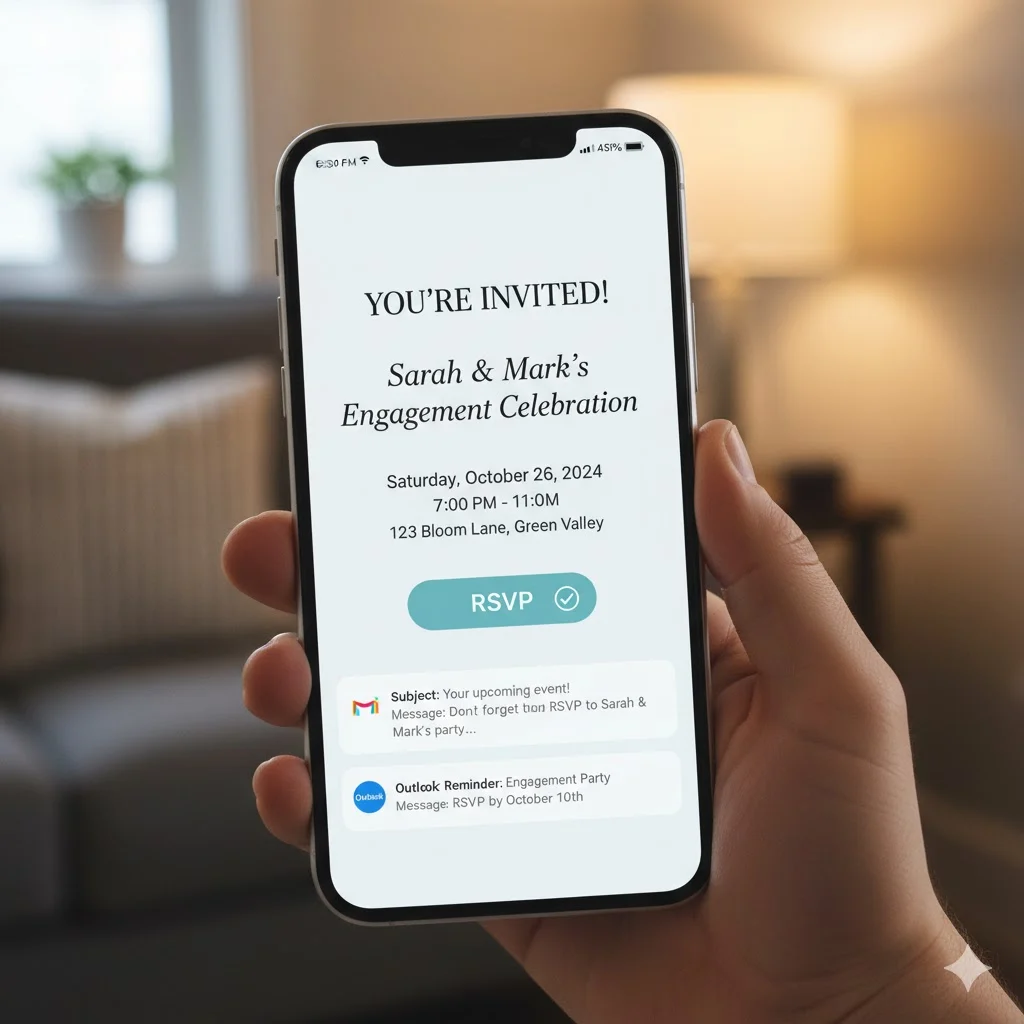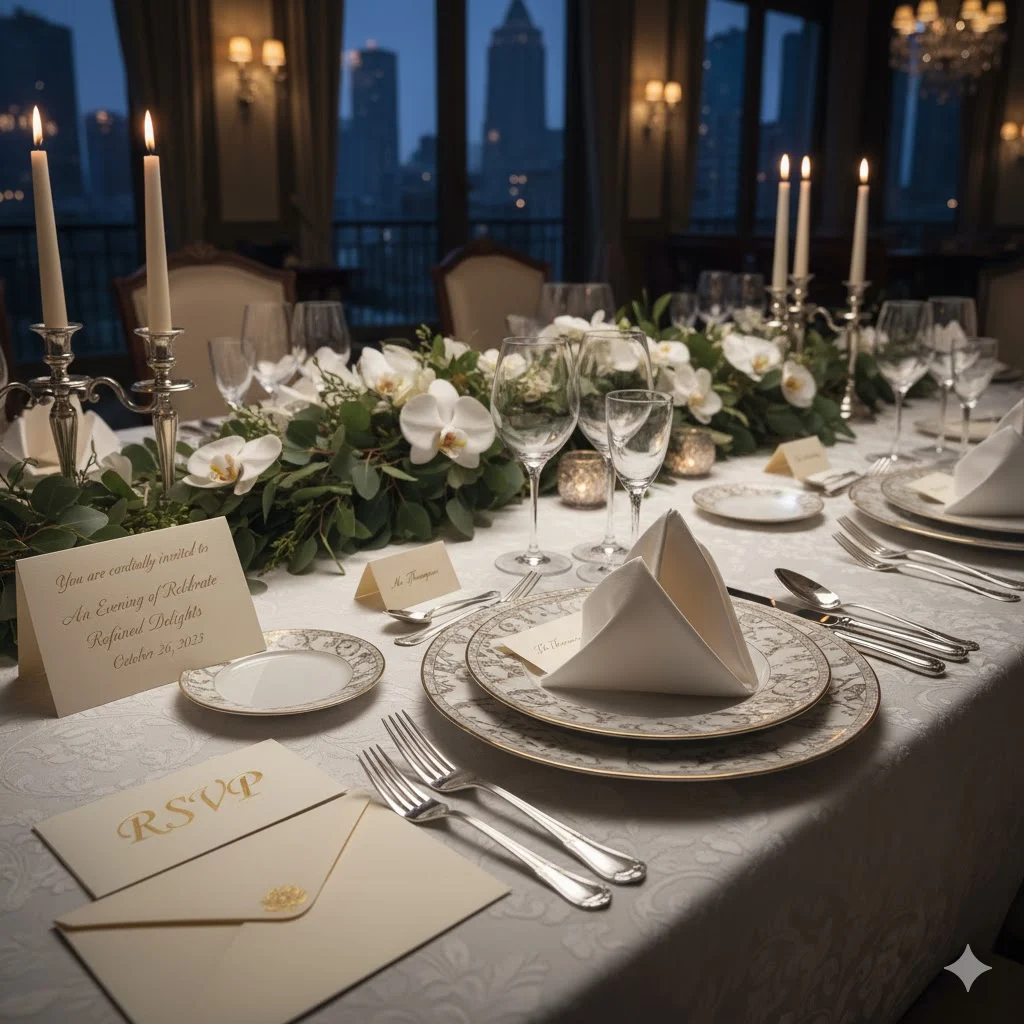If you’ve ever received a wedding, birthday, or corporate invitation, you’ve likely seen the word RSVP printed neatly at the bottom. But what does RSVP meaning really imply? And why do we still use it in 2025 when invitations often come through WhatsApp, Instagram, or Google Calendar?
Let’s break it down — its origin, meaning, etiquette, and how RSVP has evolved into a modern digital tool you can’t ignore.
RSVP stands for “Répondez s’il vous plaît,” a French phrase that means “Please respond.” It’s used in invitations and messages to request confirmation from guests. In 2025, RSVP remains a symbol of etiquette — whether you’re replying to a wedding invitation, a corporate event, or a WhatsApp group invite.
1. What Does RSVP Mean?
RSVP is an abbreviation for the French phrase “Répondez s’il vous plaît”, which translates to “Please respond.”
It’s a polite request from the host asking invitees to confirm whether they’ll attend an event. By replying, guests help organizers plan seating, catering, and logistics more accurately.
In everyday English, RSVP has become a universal expression of courtesy — used in formal invitations, emails, and even quick text messages.
🔹 Example:
“Wedding Dinner — RSVP by October 15.”
This means you should reply by that date confirming if you’ll attend or not.
Today, RSVP isn’t limited to traditional invitations. It’s equally used in online events, digital platforms, and social media invites.

2. The Origin and History of RSVP
The phrase “Répondez s’il vous plaît” traces back to 18th-century France, where high society valued proper etiquette and correspondence.
Aristocrats would host grand dinners and gatherings, and replying to invitations was seen as a mark of respect and refinement. Failing to respond could harm one’s reputation.
When English speakers adopted the term, they kept the French abbreviation because of its elegant tone. Over the centuries, RSVP became a universal standard of polite communication — found in printed cards, royal invites, and today’s digital tools.
Even in the era of AI and instant messaging, RSVP still represents the same principle of mutual respect between host and guest.

3. The Evolution of RSVP in the Digital Age
The 21st century has redefined how people use RSVP. Instead of handwritten responses or phone calls, modern invitations are managed digitally.
You’ll now find RSVP options through:
- Google Calendar events
- Email invitations with “Accept/Decline” buttons
- WhatsApp groups and polls
- Facebook, Instagram, or LinkedIn events with RSVP toggles
In 2025, RSVP is even automated. Event management tools like Evite, Eventbrite, and Paperless Post allow hosts to track responses in real time.
However, while the medium has changed, the message remains timeless — confirming your attendance is a sign of respect and reliability.

4. Proper RSVP Etiquette in 2025
Despite being a small action, RSVP etiquette carries great importance. Here’s what’s expected today:
- Always reply. Even if you can’t attend, acknowledge the invitation.
- Respond before the deadline. Hosts use responses to finalize guest counts, meals, and seating.
- Be clear. Avoid vague replies like “I’ll try.” Say “Yes” or “No.”
- Don’t bring uninvited guests. RSVP applies only to the person(s) named.
- Honor your reply. If you RSVP “yes,” attend unless an emergency arises.
Following these rules shows maturity, professionalism, and courtesy — qualities that never go out of style.

5. How to Respond to an RSVP (Formal and Informal Examples)
✉️ Formal Examples
Used for weddings, corporate events, or official gatherings.
If attending:
“Thank you for the invitation. I am pleased to confirm my attendance at the Annual Gala Dinner.”
If declining:
“Thank you for inviting me. Unfortunately, I will not be able to attend. Wishing you a successful event.”
💬 Informal Examples
Used for casual get-togethers or friend invites.
If attending:
“Count me in! Can’t wait for the party.”
If declining:
“Thanks for inviting me! I’ll miss it this time but hope to catch up soon.”
Being polite and timely in your reply leaves a positive impression, no matter the setting.
6. Using RSVP in Text Messages and Emails
In 2025, most people respond to invitations via text or email. Here’s how RSVP fits naturally in modern communication:
Text Message Examples
- “Hey, RSVP if you’re coming to brunch tomorrow.”
- “Please RSVP by Friday so we can finalize the reservation.”
- “Don’t forget to RSVP for the meetup tonight.”
Email Examples
Subject: RSVP for Annual Strategy Meeting
Dear [Name],
Thank you for the invitation. I confirm my attendance at the Annual Strategy Meeting on [Date].
Best regards,
[Your Name]
Professional RSVPs help build trust and accountability in business communication.
7. Common RSVP Mistakes and How to Avoid Them
Even though RSVP is simple, many people get it wrong. Let’s clear up the most frequent errors:
| Mistake | Why It’s a Problem | Correct Approach |
|---|---|---|
| Ignoring the RSVP | Leaves host uncertain | Always reply, even if declining |
| Replying too late | Disrupts planning | Respond by or before the deadline |
| Assuming “No reply” means “No” | Host may still expect you | Send a clear answer |
| Bringing extra guests | Breaches etiquette | Only attend with invited persons |
| Cancelling last-minute | Causes inconvenience | Inform host promptly |
Proper RSVP etiquette is a small gesture that shows emotional intelligence and cultural awareness.
8. Modern Variations of RSVP You Might Encounter
As communication evolves, so does language. Here are modern forms of RSVP you’ll often see in 2025:
| Term | Meaning | Example |
|---|---|---|
| RSVP ASAP | Respond as soon as possible | “RSVP ASAP so we can finalize catering.” |
| Regrets Only | Reply only if you can’t attend | “Regrets only by Nov 10.” |
| RSVP Online | Confirm attendance via web link | “Please RSVP online using the link provided.” |
| RSVP Link | URL-based confirmation | “RSVP here ➜ event.com/register” |
| RSVP Deadline | Specific cutoff date | “RSVP by 5 PM Friday.” |
Each version adapts RSVP to digital convenience while maintaining traditional politeness.
9. Why RSVP Etiquette Still Matters Today
In an era where digital communication dominates, RSVP remains a symbol of respect, organization, and mutual understanding.
💡 Here’s why it still matters:
- It allows hosts to plan efficiently.
- It prevents waste in catering and seating.
- It maintains professional courtesy.
- It strengthens personal relationships by showing reliability.
Ignoring an RSVP request can create confusion and inconvenience. A quick reply, however, builds goodwill and trust.
10. RSVP in Professional Settings
In professional environments, RSVP responses play a major role in event management, corporate culture, and networking.
Examples:
- Company meetings: “Kindly RSVP by 5 PM to confirm your participation.”
- Training sessions: “Please RSVP to reserve your seat.”
- Client events: “RSVP required due to limited space.”
Corporate communication values punctuality and clarity — replying promptly reflects professional discipline and organizational respect.
11. Real-Life Examples of RSVP Usage
Let’s look at a few practical uses of RSVP in both personal and professional contexts:
Personal
- “We’re hosting a baby shower! RSVP by April 20.”
- “Dinner at my place this Saturday — RSVP please.”
Professional
- “Annual Performance Meeting – RSVP via Outlook.”
- “Kindly RSVP for our leadership summit by next Monday.”
Digital/Online
- Facebook event page: “RSVP to see who else is attending.”
- Google Calendar invite: “Click ‘Yes’ or ‘No’ to RSVP.”
These examples show how RSVP remains flexible — from paper invitations to social platforms.
12. FAQs About RSVP Meaning
1. What does RSVP stand for?
RSVP stands for “Répondez s’il vous plaît,” which means “Please respond.”
2. Is RSVP used only for formal events?
No. RSVP is now used in casual, digital, and business contexts.
3. How should I reply to an RSVP?
Send a clear “Yes” or “No” response before the deadline.
4. Is it rude not to RSVP?
Yes. Failing to respond is considered disrespectful to the host.
5. Can I RSVP through WhatsApp or text?
Yes. In 2025, digital RSVPs through text or email are perfectly acceptable.
6. What does “Regrets only” mean?
It means you should only reply if you’re unable to attend.
7. How soon should I RSVP?
Ideally within 24–48 hours of receiving the invitation.
8. What if my plans change after I RSVP?
Inform the host immediately to adjust arrangements.
9. Is RSVP mandatory for corporate events?
Yes, for professional settings, it’s a sign of commitment and respect.
10. What’s the difference between RSVP and Save the Date?
“Save the Date” is a heads-up about an event; “RSVP” requests a confirmation.
13. Conclusion
Even after centuries, RSVP remains timeless — bridging etiquette from handwritten cards to digital invites.
It’s more than a formality; it’s a gesture of respect, communication, and consideration.
In 2025, when everything moves fast, taking a moment to respond shows class and responsibility.
So the next time you receive an invitation — whether for a casual get-together or a corporate gala — remember to RSVP.
Because sometimes, good manners speak louder than words.



